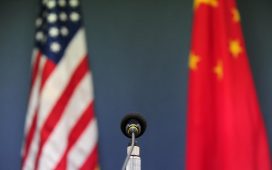Vessels carrying shipping containers sail near Kwai Tsing Container Terminal in Hong Kong, China, April 23, 2025.
Tyrone Siu | Reuters
The intense trade war with the U.S. has left lasting scars on Chinese exporters with many looking to diversify away from the U.S., despite the temporary tariff reprieves, a private survey found.
Based on a poll of 4,500 exporters across several major economies, trade insurer Allianz Trade found that 95% of Chinese exporters surveyed are planning on, if not already, doubling down on exporting to markets outside the U.S. for their goods.
The U.S.-China “decoupling” remains a likely scenario over the medium term, the survey said, as Chinese exporters look to pivot away from the U.S. and American firms accelerate efforts to shift production out of China.
An increasing number of firms surveyed are expecting a dent on export turnover this year due to the double-digit U.S. tariffs, the report said.
Even after the temporary tariff reduction following Beijing-Washington’s deal in Switzerland earlier this month, the U.S. trade-weighted tariff rate on Chinese goods remained at 39%, well above the 13% rate applied before the second Trump administration, according to Allianz Trade estimates.
The rapid de-escalation of the tariff spat has led to a large spike in U.S.-bound shipments as exporters front-load orders during the 90-day grace period, pushing up freight rates.
Chinese exporters in the coastal city of Ningbo are undeterred by the truce, and sticking with their plans to “go global”, said Tianchen Xu, senior economist at Economist Intelligence Unit.
In a recent report on a field visit to the city, which hosts China’s second largest port by cargo handled after Shanghai, Xu said Southeast Asia remained the top choice among local businesses seeking to move production overseas.
For Southeast Asia, companies show growing interests in setting up production in Indonesia, Xu said. On the other hand, perception was mixed about Vietnam, with concerns over rising costs weighing against an attractive labor force.
While the U.S. has hammered out trade deals with China and the U.K, talks with other long trading partners seem to have stalled.
Allianz Trade points out a sobering reality that global exports could see a loss of $305 billion this year on the back of the widespread trade conflicts.
In comparison, global trade hit a record $33 trillion last year, according to the United Nations Trade and Development.












